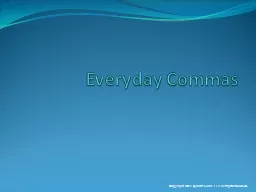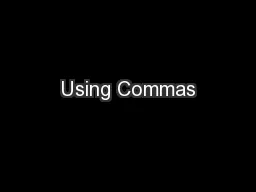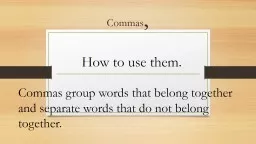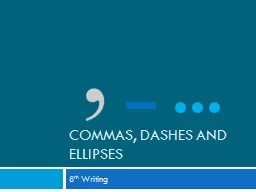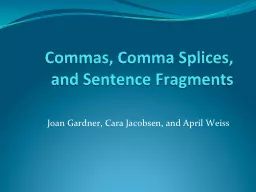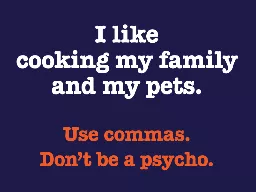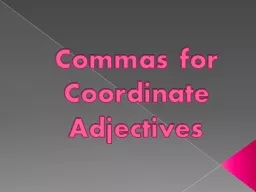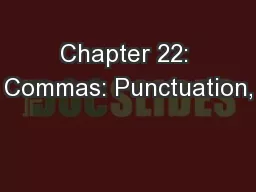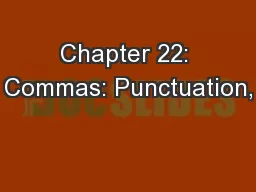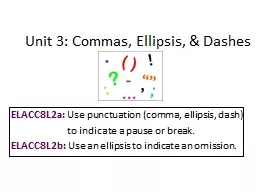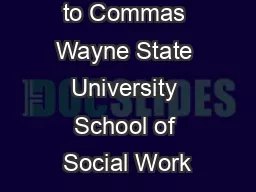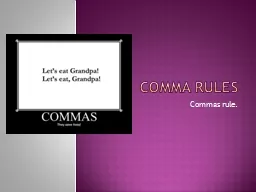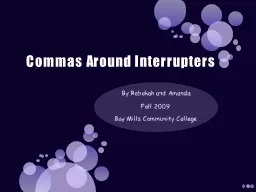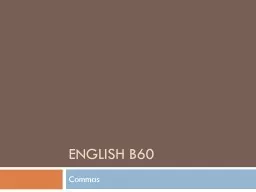PPT-Everyday Commas Copyright 2014 by
Author : cheryl-pisano | Published Date : 2018-11-01
Write Score LLC All Rights Reserved 1 Comma Use 1 Use commas to separate elements in a series Example Natasha grabbed her math book a ruler and two pencils
Presentation Embed Code
Download Presentation
Download Presentation The PPT/PDF document "Everyday Commas Copyright 2014 by" is the property of its rightful owner. Permission is granted to download and print the materials on this website for personal, non-commercial use only, and to display it on your personal computer provided you do not modify the materials and that you retain all copyright notices contained in the materials. By downloading content from our website, you accept the terms of this agreement.
Everyday Commas Copyright 2014 by: Transcript
Download Rules Of Document
"Everyday Commas Copyright 2014 by"The content belongs to its owner. You may download and print it for personal use, without modification, and keep all copyright notices. By downloading, you agree to these terms.
Related Documents

